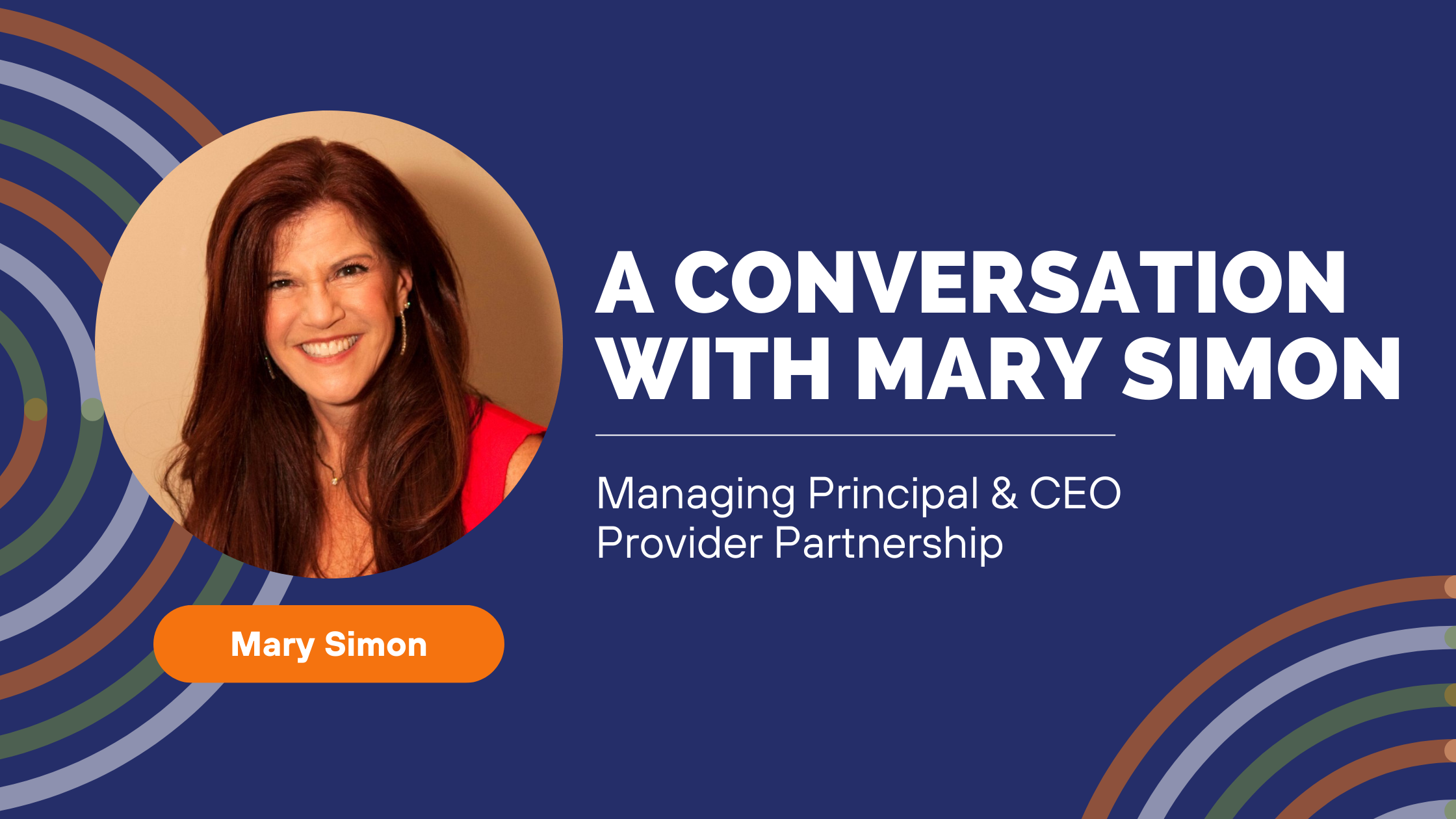Mary Simon, CEO of Provider Partnership, brings a unique perspective to healthcare consulting as the leader of a certified women-owned business. With a career rooted in building stronger provider networks and helping health plans navigate complex contracting challenges, she’s seen firsthand how agility, analytics, and collaboration can transform outcomes. In this Q&A, Mary shares her views on the trends reshaping healthcare, the pitfalls organizations often overlook, and the opportunities that come from pairing strategic vision with hands-on execution.
As the CEO of a women-owned business, what does this certification mean to you personally and professionally—and how does it shape the way Provider Partnership operates?
Being a certified women-owned business is about more than a badge—it’s about representation, opportunity, and impact. Personally, it’s a reminder of how far we’ve come and the responsibility we carry to create space for others. Professionally, it reflects our commitment to excellence, equity, and innovation. Our certification reinforces to clients that they’re not only partnering with a capable firm, but one that brings diverse perspectives to the table.
What are the biggest trends you’re seeing in healthcare network development and provider contracting right now? How should health plans be responding?
We’re seeing increased demand for agility—whether it’s entering new markets, adapting to value-based care models, or filling specialty gaps. There’s also more focus on data-driven decisions, compliance readiness, and digital onboarding. Health plans need partners who can act fast, ensure accuracy, and bring scalability without compromising standards.
You work closely with both health plans and provider groups. What are some common mistakes you see organizations make when it comes to building or optimizing their networks?
One major mistake is treating network development as a one-time build instead of an ongoing, strategic process. Others include underestimating the complexity of provider data management, siloing contracting and credentialing, and failing to localize network strategies. These missteps slow down execution and affect provider satisfaction.
In your experience, what’s the biggest opportunity most organizations overlook when it comes to network optimization?
It’s the power of proactive analytics. Many teams are reactive—they focus on filling gaps once they’re flagged. But by leveraging data to forecast attrition, track performance, and assess adequacy by market segment, you can build stronger, more sustainable networks from the start.
Can you walk us through the kind of results Provider Partnership delivers for clients? What makes your approach different from others in the market?
We’re results-focused and execution-obsessed. Whether it’s accelerating time to market, reducing credentialing timelines, or increasing provider engagement, our clients see measurable impact. What sets us apart is our ability to plug directly into a client’s systems and workflows—no cookie-cutter solutions, just tailored, high-touch support.
Many health plans are trying to expand into new markets quickly, often with limited internal resources. What’s your advice to teams trying to scale fast without sacrificing quality or compliance?
First, don’t wait until you’re overwhelmed to seek support. Expansion needs to be intentional, with a clear roadmap and built-in safeguards. Work with partners who understand the regulatory landscape and can manage both the pace and the precision needed to succeed.
What role does project management play in the success of provider contracting and network initiatives? And what makes Provider Partnership’s approach effective?
Project management is the glue that holds every initiative together. It’s what ensures transparency, timeliness, and accountability. At Provider Partnership, our project managers are more than schedulers—they’re strategic drivers who ensure alignment between stakeholders, data, and deliverables.
How do you see healthcare evolving over the next 3–5 years, especially in terms of value-based care and provider collaboration?
I see deeper alignment between payers and providers, with shared incentives tied to outcomes, not just volume. Value-based care will mature, requiring networks that are not just adequate but engaged and collaborative. The organizations that thrive will be those that embrace transparency, integrate technology, and act on insights—not just collect them.
For organizations struggling with bandwidth or execution challenges, how do they know it’s the right time to bring in a partner like Provider Partnership?
If projects are stalling, goals are slipping, or your team is stretched too thin to focus on strategy, it’s time. A good partner doesn’t just fill gaps—they expand your capacity to deliver. We help clients not just “get it done,” but get it done right, faster, and with long-term value in mind.
What advice would you give to other women leading or launching businesses in the healthcare space—and what’s been the biggest lesson in building a successful consulting firm?
Trust your vision, lead with integrity, and know that your voice is needed. One of my biggest lessons has been to stay focused on the mission while being flexible with the path. Healthcare is complex and ever-changing, but when you build with purpose and surround yourself with the right people, success follows.
We hope this Q&A inspires new conversations about building stronger, smarter networks. To learn more about partnering with us, contact us today.
About Mary Simon
Mary Simon has worked in the healthcare arena for more than 25 years. She has broad experience in both the payer and provider sectors, specializing in provider contracting and network development. Mary also has extensive knowledge in facility and provider contracting for commercial health plans, behavioral health, dental, Medicare Advantage and Medicaid. Mary combines her strong strategic thinking, negotiations and communication skills with her depth of experience in network management and project management to deliver client specific options for success.






